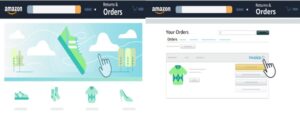Construction Industry Scheme make NI contribution
The Construction Industry Scheme (CIS) is a set of special rules that affect tax and National Insurance for those working in the construction industry. Businesses in the construction industry are known as ‘contractors’ and ‘subcontractors’. It will need to aware of the tax implications of the scheme.
Under the CIS scheme, contractors are require to deduct money from a subcontractor’s payments and pass it to HMRC CIS. The CIS deductions count as advance payments towards the subcontractor’s tax and National Insurance liabilities.
Contractors are define as those who pay subcontractors for construction work or who spent more than £3m on construction a year within the 12 months. This £3m will make their first payment.
The CIS covers most construction work carry out in the UK, including jobs such as:
- site preparation
- alterations
- dismantling
- construction
- repairs
- decorating
- demolition
Exceptions to the definition of construction work includes professional work done by architects and surveyors, carpet fitting, scaffolding hire (with no labour). It work on construction sites that’s clearly not construction. The CIS does not apply to construction work carry on outside the UK.
How do I know whether to register under the Construction Industry Scheme?
There are two components of the Construction Industry Scheme (CIS). One is being a ‘contractor’ and one being a ‘subcontractor’.
If you are engaging other self-employed workers doing construction work then you are a contractor. You must register under the CIS construction industry scheme. There is more information on how to register for the CIS as a contractor on GOV.UK.
As a self-employed worker. It is more likely that you will engage, or taken on, by a contractor to perform some construction work. This will mean you are a subcontractor. If you are a subcontractor then you can choose whether or not to register under the CIS.
GOV.UK explains how you can register for the CIS as a subcontractor. What information you will need to able to register. There are different methods depending on whether or not you have already registered as self-employed. If you are working for yourself as a sole trader or through a different trading entity, such as a partnership or a limited company.
Note that registration under the CIS is in addition to registration as CIS self-employed for Self Assessment, not instead of registering as self-employed. This means for those new to both self-employment and the CIS. There are two separate registrations. However, both can be done at the same time.
It is also possible to be both a contractor and subcontractor at the same time. For example, if Ryan, an electrician and contracted by a local builder to carry out some work. Then his work would fall under the CIS. If he himself subcontract out some elements of his work to his electrician friend Jenny because he want to get the job done quicker. Then he must also register as a contractor and pay Jenny under the CIS.
What happens if I register for the Construction Industry Scheme (CIS)?
If you decide to register for the CIS then the contractor must deduct and withhold tax at a rate of 20% of the amount of your invoices. If your invoice includes direct expenses such as for materials or tool hire. Then tax should not withheld from these amounts. As you should paid 100% of these costs without any CIS deductions withheld.
Note, that ‘self billing invoices’ are quite common in the construction industry. Rather than you issuing an invoice for your services. The contractor raises a self-billing document and forwards a copy to you with your payment (the idea is that this makes invoicing easier where the contractor, rather than the worker, determines the pricing). You should always check ‘self billing invoices’ to make sure that they agree to your records. What you expect to pay.
The 20% deduction is then pay the contractor to HMRC. Who treat it as an advance payment towards your income tax and National Insurance contributions (NIC) for the particular tax year. It will show in your Self Assessment tax return.
You then receive 80% of your invoice pay directly to you. According to your agree invoice terms, along with the full amounts for any additional costs, such as materials.
The advantage of registering under the CIS is that the contractor only withholds deductions of 20% instead of 30%. If you decide not to register
What if you become VAT registered?
If you are VAT registered. Then CIS deductions are not withheld on the VAT element of your invoice. You may have heard that you can charge more for your services. If you voluntarily register for VAT (or that you can bolster your earnings under the Flat Rate VAT scheme). It should note that most financial advantages of the Flat Rate Scheme. It eliminated when the ‘limited cost trader’ rules were introduced in April 2017.
VAT is a complex tax, any ‘benefits’ there are of entering the VAT regime can be reduced or wiped out by additional administration, accountancy fees or penalties for getting things wrong. Voluntarily entering the VAT regime is therefore not something to undertaken lightly. As you will also need to comply with the Making Tax Digital for VAT requirements from April 2022.
If you are thinking about becoming VAT registered voluntarily but have not yet done so. Then we recommend you read our article. Are you in low paying self-employment and considering becoming VAT registered?
In addition, from 1 March 2021, the government is rolling out a reverse charge initiative aimed at tackling fraud in the construction sector. This is cause when subcontractors charge VAT to their business customers. but ‘disappear’ before passing sums on to HMRC. The reverse charge will not apply to CIS services supply to domestic customers. Who will continue to charge VAT. if applicable, in the usual manner.
The VAT reverse charge rules will apply to suppliers of specified services, report under the CIS. HMRC should have written to all VAT registered construction businesses advising them. Whether they might be liable to the reverse charge. Suppliers will no longer charge VAT to their contractors. Instead, the contractors receiving the invoices will self-assess the VAT by effectively charging themselves. VAT on the subcontractors’ services on the VAT return in Box 1. If able to recover VAT in full, the reverse charge VAT can claim on the same VAT return as a contra entry in Box 4. Please note that there may an impact to cashflow for those businesses that normally receive VAT on their supplies. Who use it as working capital until it is pay over to HMRC. So businesses should take steps to review their cashflow position.
You can watch a HMRC webinar on GOV.UK on these new VAT reverse charge rules.


